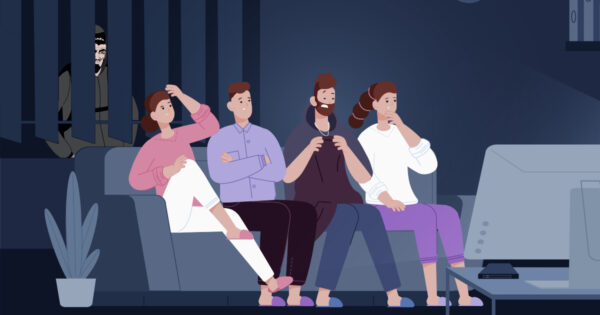Too close for comfort
One of the differences between traditional linear and CTV advertising is that ads served on the former are based on broad, general factors, whereas those on the latter are—or at least can be—related to your search or purchase history.
Whether the ad is targeted or not, the perception that it could change the experience—both for the intended target of the spot and their unwitting companions. At the moment, platforms that can tie ad-serving more closely to prior search and purchasing behavior, including YouTube and Prime Video, have the most potential to serve these embarrassing spots.
For instance, YouTube—which now makes up 10% of all CTV consumption, according to April data from the measurement firm Nielsen—is owned by Google and serves ads to users based on their browsing history across the Google family of products. At times, seeing what ads the platform serves others could feel nearly voyeuristic, as if someone were looking at your search history or social media feed.
However, the issue can extend beyond brand advertising and into specific products, especially as retargeting campaigns become more prevalent on CTV, according to Golus.
For example, the issue could arise with connected TV streamers with retail media arms, like Prime Video and Walmart-owned Vizio, which can serve viewers ads for products they have recently purchased.
These outlets already have a massive reach. For instance, Prime Video’s ad tier, which launched in January across all of its subscribers, has an average monthly ad-supported reach of 200 million global customers, 115 million of whom are in the U.S., according to the company.
Narrowing in granularity across these millions of users could lead to uncomfortable moments if sensitive products are promoted in the presence of a crowd. The holiday gift-shopping season, for example, could make watching CTV with your family a risky proposition.
For its part, Prime Video’s shows have already poked fun at ad targeting.
Recently, The Boys Season 4 showcased a moment when Vought, the antagonistic corporation cashing in on superheroes, introduces custom digital product placement in its fictional movies and shows. During the scene, Chace Crawford’s character, The Deep, explains to a crowd that one of his films, Rising Tide, would show white viewers a product such as an IPA while Black viewers would (offensively) see a Vought Imperial Peach Cognac.
Eric Kripke, the showrunner for The Boys, confirmed the moment was a gag about virtual product placement.

